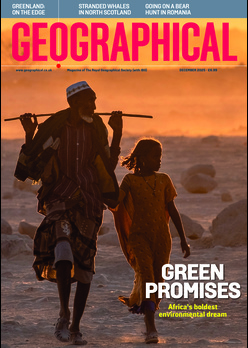
Learn more about UN Peacekeeping and the Blue Helmet troops that help to ensure conflict resolution across all corners of the globe
By
More than 97,000 uniformed military personnel – contributed by national armies from more than 120 countries across the globe – form the UN Peacekeepers, also known as the ‘Blue Helmets’. Unlike soldiers often deployed during wars, UN Peacekeepers are deployed in order for countries to navigate out of conflict, and to ensure peace processes occur smoothly.
Over the past 75 years, more than two million women and men have served a total of 71 peacekeeping missions.
What is peacekeeping – and what are its challenges?
Peacekeeping by the UN is upheld by three core tenets: consent of the parties, impartiality and non-use of force (excluding self-defence and defence of mandates). Despite the efforts from UN Peacekeeping, politically turbulent and physically difficult environments hinder the success of some missions – for example in Somalia, Rwanda and the former Yugoslavia in the early 1990s.

A key issue is lack of trust within local communities, causing gaps in information which rebel groups can capitalise on. Multiple reports of abuse and sexual exploitation – sometimes with the involvement of peacekeepers themselves – also affect the effectiveness of missions.
However, over 60 years, major successes have occurred: with conflicts ended in many countries including Guatemala, Mozambique, Namibia and Cambodia. UN Peacekeeping also won the Nobel Peace Prize in 1988 for its efforts in ensuring peace across the world and within countries.
Troops and military instructors returning from missions have stressed the importance of training soliders to protect civlians in non-violent ways, approaching new situations with humility and adopting soft skills such as negotiation and a willingness to engage in dialogue to diffuse situations.
How does it work?
All military personnel that work as Blue Helmets are seconded from their own national armies to support the UN’s efforts. Most troops are currently from African and Asian countries. These troops can be called upon for a variety of reasons, including providing security during elections or across conflict zones to protecting civilians and monitoring peace processes. The cost to run UN Peacekeeping is less than 0.5 per cent of the global military spending.
There are many roles involved in peacekeeping. Although the most common role is an infantry soldier, specialised employees known as enablers—who perform tasks including rebuilding infrastructure following natural disasters—are needed. Enablers also perform specific roles such as working as helicopter crews within transport companies or medical facilities. All roles require training from the UN, as troops can often find themselves in complex and dangerous situations, including ambushes.

A major challenge for the UN is to increase its female labour force in its peacekeeping efforts: currently, 16.7 per cent of staff officers and military observers are female, but the organisation seeks to reach its target of 25 per cent by 2028. In areas where it is not culturally appropriate for men to enter particular spaces, women soldiers can conduct house searches and also screen female civilians, which in turn can improve the well-being of women and girls in affected areas.
What UN Peacekeeping missions are currently underway?
Currently, there are eleven peacekeeping operations across three continents led by the UN’s Department of Peace Operations. The first of these – United Nations Truce Supervision Organisation – was established in 1948 in the Middle East to monitor ceasefires, armistice agreements and prevent incident escalation. As of March 2024, a total of 998 personnel are active in the operation, with Australia, the Netherlands and Switzerland providing the most military contribution.

The largest current operation is the United Nations Mission In The Republic Of South Sudan (UNMISS), with a total of 18,125 deployed personnel as of February 2024. Of these, Rwanda, India and Nepal supply the most military contribution, which includes experts on missions, staff officers and contingent troops. Between these three countries, more than 37 per cent of total personnel have been provided to ensure South Sudan’s civilians are protected and receive humanitarian assistance.
Other missions include the United Nations Interim Administration Mission in Kosovo (UNMIK) which promotes security, stability and respect for human rights in the country. A total of 343 personnel have been deployed, with Slovenia contributing the most military and Finland supplying the most police.
In the Democratic Republic of the Congo, a mission comprising more than 17,000 personnel has been active since 2010 to protect civilians and humanitarian personnel against physical violence, as well as supporting the Government’s stabilisation and peacekeeping efforts.




